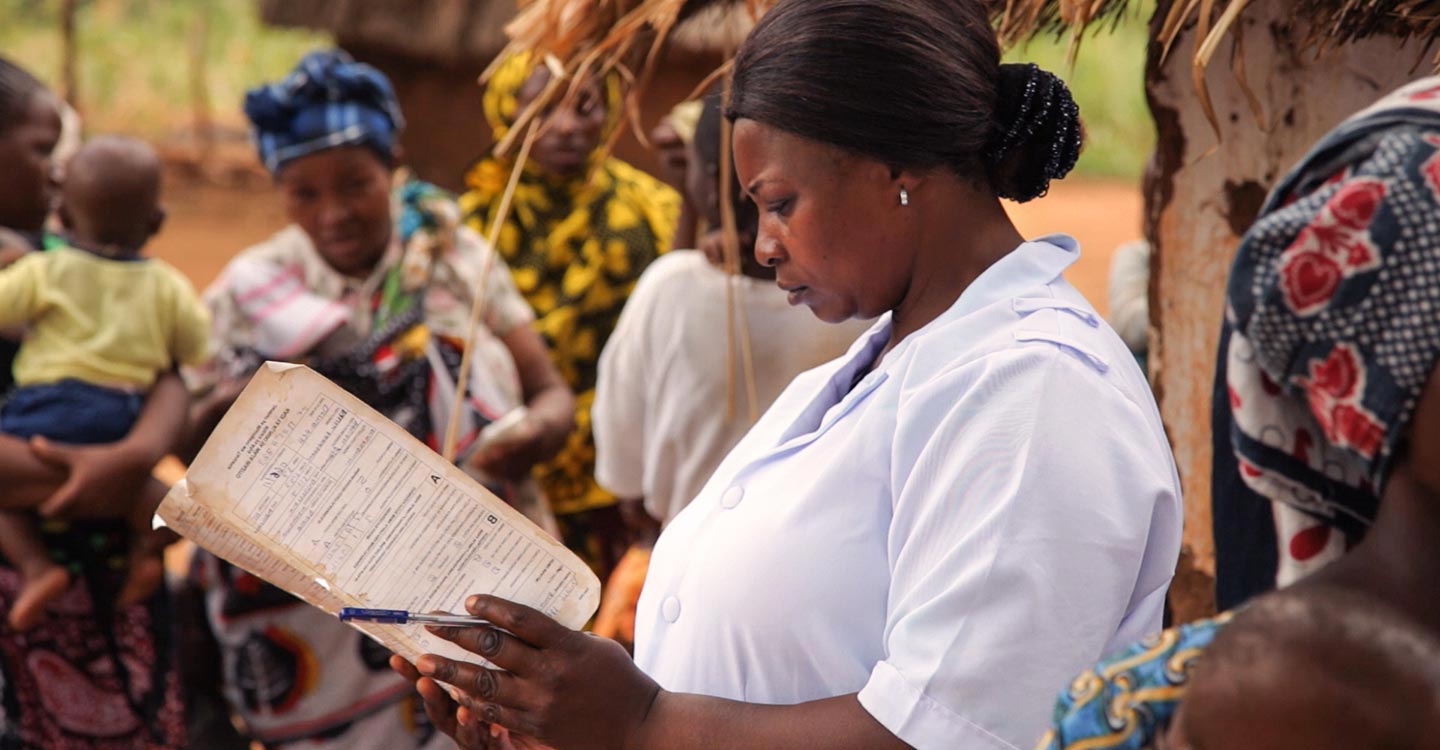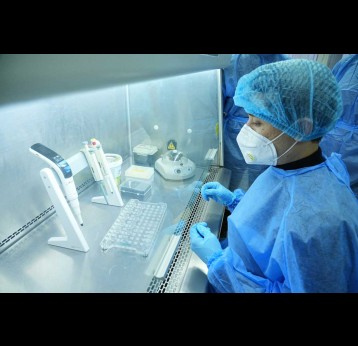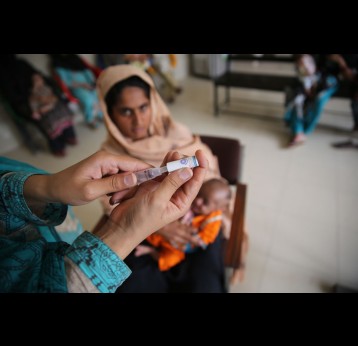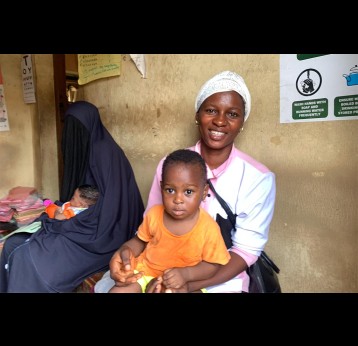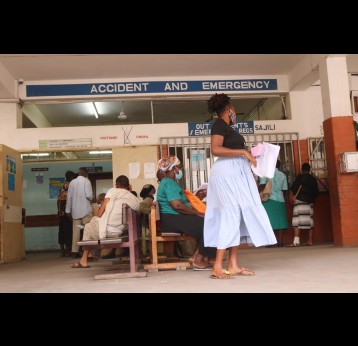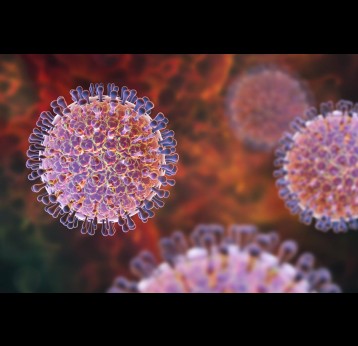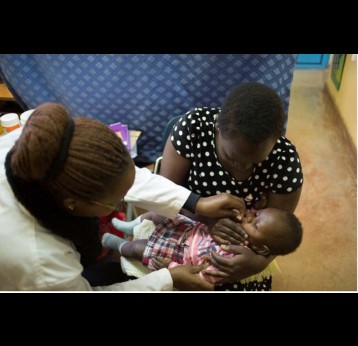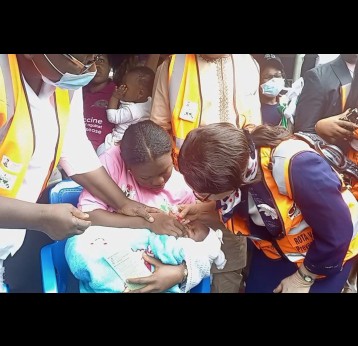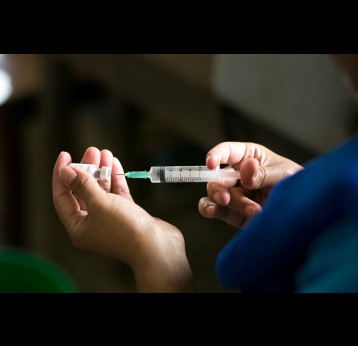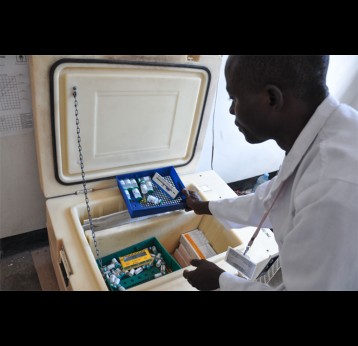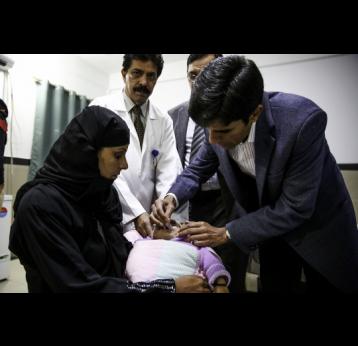Gavi’s impact
Rotavirus vaccine coverage in Gavi-supported countries increased by 11 percentage points between 2017 and 2018
OVER 100 MILLION VACCINATED
Rotavirus vaccines protect against the deadliest form of diarrhoea in young children. One of Gavi's main objectives is to ensure access to these vaccines in the countries that need them most.
Thanks to our support, Gavi-supported countries have immunised more than 100 million children against rotavirus. Coverage of a full course of the vaccine across Gavi-supported countries increased by 11 percentage points between 2017 and 2018 to reach 39%.
Shortages in supply of the rotavirus vaccine delayed a number of planned introductions in 2018. Nonetheless, Afghanistan and Uganda successfully introduced the vaccine, bringing the total number of Gavi-supported countries protecting children with the vaccine to 45. India is also rapidly scaling up its rotavirus vaccine programme nationwide, providing increased protection for the world’s largest birth cohort.
COST-EFFECTIVE
According to a study in 116 countries, rotavirus vaccination is cost-effective. This is particularly true in low- and lower-middle-income countries with high child mortality.
Researchers found that without rotavirus vaccination, in 2010 there would have been:
- 23 million outpatient cases
- 3.3 million inpatient cases
- over 290,000 deaths
- US$ 987 million spent on treatment costs.1
Using rotavirus vaccines in Gavi-supported countries can save US$ 68 million in treatment costs every year.2
In addition, rotavirus vaccination helps avoid the unnecessary and ineffective use of antibiotics often prescribed for this viral diarrhoeal disease.
1 Palermina-Caicedo A, De la Hoz-Restrepo F, Alvis-Guzman N. Epidemiological and Economic Impact of Monovalent and Pentavalent Rotavirus Vaccines in Low and Middle Income Countries: A Cost-Effectiveness Modeling Analysis. The Pediatric Infectious Disease Journal, April 28 2015.
2 Atherly DE, Lewis KDC, Tate J, Parashar UD, Rheingans, RD. Projected health and economic impact of rotavirus vaccination in GAVI-eligible countries: 2011-2030. Vaccine. 2012;30(Suppl 1):A7–A14).
The issue
Rotavirus is the leading cause of deadly diarrhoea in children worldwide.
DISEASE BURDEN
Rotavirus is a virus that can cause inflammation of the stomach and intestines. Symptoms include severe watery diarrhoea, often with vomiting, fever, and abdominal pain. Infants and young children are most likely to get rotavirus disease.
In serious cases, children risk dying from dehydration. More than 500,000 children under five years die from diarrhoeal disease each year.
Over 95%1 of rotavirus deaths are in low-income countries in Africa and Asia. In these countries, access to diarrhoea treatment is often limited or unavailable.
PREVENTION
Unlike other types of diarrhoea, improving hygiene does not prevent rotavirus infection. Also, antibiotics and other drugs cannot cure rotavirus.
Although it can be treated with proper healthcare, this is often lacking in low-income countries. As a result, vaccination is the best way to prevent rotavirus illness and death.
ROTAVIRUS VACCINES SAVE LIVES
WHO recommends that all countries introduce rotavirus vaccines in their national programmes.
This is particularly important in South and Southeast Asia and sub-Saharan Africa.
Recent studies show significant impact of rotavirus vaccines. Following introductions of the vaccine, diarrhoeal deaths in young children fell by 19–43% in Bolivia, 43–55% in Mexico and 57–64% in Venezuela.2
Increasing access to these vaccines in Gavi-supported countries can prevent more than 2.4 million deaths by 2030.3
SUPPLY CONSTRAINTS
Short-term supply constraints resulted in several rotavirus vaccine introductions being delayed in 2018. However, the Alliance has worked hard to address supply constraints and significant bottlenecks and managed to minimise the impact in countries’ ongoing routine programmes. We continue to closely monitor the supply situation.
In 2018, presentations from new vaccine manufacturers became available, helping to improve the resilience of the rotavirus market. This also resulted in the weighted average price of rotavirus vaccine falling by around 10% when two new suppliers entered the market.
1 Tate JE, Burton AH, Boschi-Pinto C, et. al. 2008 estimate of worldwide rotavirus-associated mortality in children younger than 5 years before the introduction of universal rotavirus vaccination programmes: a systematic review and meta-analysis. The Lancet Infectious Diseases. 2012;12(2):136–141.
2 The democratic virus and its major weakness – vaccines . PATH website. Available at: The democratic virus and its major weakness – vaccines. Accessed 29 September 2020.
3Vaccine, Volume 30, Supplement 1, 27 April 2012: ‘Rotavirus vaccines for children in low-income countries: Understanding the science, maximising the impact, and sustaining the effort’, Kathleen M. Neuzil, Umesh D. Parashar, A. Duncan Steele.
Gavi’s response
Gavi offers support for low-income countries to introduce rotavirus vaccines.
NEW VACCINE REACHES LOW-INCOME COUNTRIES WITH ALMOST NO DELAY
Gavi opened a funding window for rotavirus vaccines in Europe and Latin America in 2007. This was only a year after the USA and other high-income countries introduced the vaccine.
In 2009, WHO made a recommendation for universal rotavirus vaccination. Following this decision, Gavi started to offer this type of support worldwide. This allowed for countries in Africa and Asia, where most rotavirus deaths occur, to introduce the vaccine.
We fund the cost to procure the rotavirus vaccine itself, as well as a one-time grant to cover introduction costs.
INTEGRATING IMMUNISATION WITH OTHER HEALTH SERVICES
WHO emphasises the need to integrate rotavirus vaccine with other interventions.
In 2014, Bangladesh, India and Zambia piloted integrated programmes against pneumonia and diarrhoea. The pilots were part of the Integrated Global Action Plan for the Prevention and Control of Pneumonia and Diarrhoea.
THE ROTAVIRUS VACCINE PROGRAM
Gavi supported the Rotavirus Vaccine Program (RVP), which ran from 2003 until 2008. RVP was a partnership between PATH, WHO and the U.S. Centers for Disease Control and Prevention (CDC).
The aim was to make rotavirus vaccines available where they were needed most, as fast as possible. It conducted clinical trials to show the safety and efficacy of the vaccines. These laid the groundwork for WHO’s recommendation for universal introduction.
Proof of concept
WHO based its 2009 recommendation on three studies in Africa and Asia:
- Clinical study in Asia (Bangladesh and Vietnam). The vaccine reduced severe rotavirus disease by 51% during the first year of life. This is when children are at greatest risk of diarrhoea-related illness and death.1
- Clinical study in sub-Saharan Africa (Ghana, Kenya and Mali. Vaccination prevented 64% of severe rotavirus disease during the first year of life.2
- Clinical study in South Africa and Malawi. Rotavirus vaccine reduced severe rotavirus disease by 61% during the first year of life.3
1 Zaman K, Dang DA, Victor J, et al. Efficacy of pentavalent rotavirus vaccine against severe rotavirus gastroenteritis in infants in developing countries in Asia: a randomised, double-blind, placebo-controlled trial. The Lancet. 2010;376(9741):615-623.
2 Armah GE, Sow SO, Breiman RF, et al. Efficacy of pentavalent rotavirus vaccine against severe rotavirus gastroenteritis in infants in developing countries in sub-Saharan Africa: a randomised, double-blind, placebo-controlled trial. The Lancet. 2010;376(9741):606–614.
3 Madhi SA, Cunliffe NA, Steele D, et al. Effect of human rotavirus vaccine on severe diarrhoea in African infants. New England Journal of Medicine. 2010;362(4):289–298.
Working together – how Alliance partners tackled rotavirus shortages
When one rotavirus vaccine manufacturer reduced its allocation to the Gavi market at short notice and another had an issue with production, Alliance partners stepped in to help prevent major supply interruptions and stock-outs. This meant that despite the disruption, during 2018 most children received their vaccinations as planned.
For its part, UNICEF worked with manufacturers to speed up the delivery of vaccines to countries most in need of supplies. The Gavi Secretariat and WHO worked with other partners to ensure that countries had the information they needed in order to adjust their immunisation schedules and reduce the impact of any potential shortfalls. At the same time, two new suppliers entered the market.
This was the Vaccine Alliance at its most effective, with each partner playing its role in helping to minimise potential risks to the immunisation plans of countries and to the health of children. As a result of the hard work of all involved, stock-outs were avoided and few children missed out on their vaccinations.
Most countries that plan to introduce rotavirus vaccine during the coming year should still be able to do so, by switching suppliers if necessary to fill potential gaps. Where delayed introductions are inevitable, the Alliance is working closely with manufacturers to ensure these hold-ups are minimised. In the longer term, new vaccine presentations – due to be launched in the next few years – will help to overcome supply constraints and improve the market’s resilience.
From other sites
